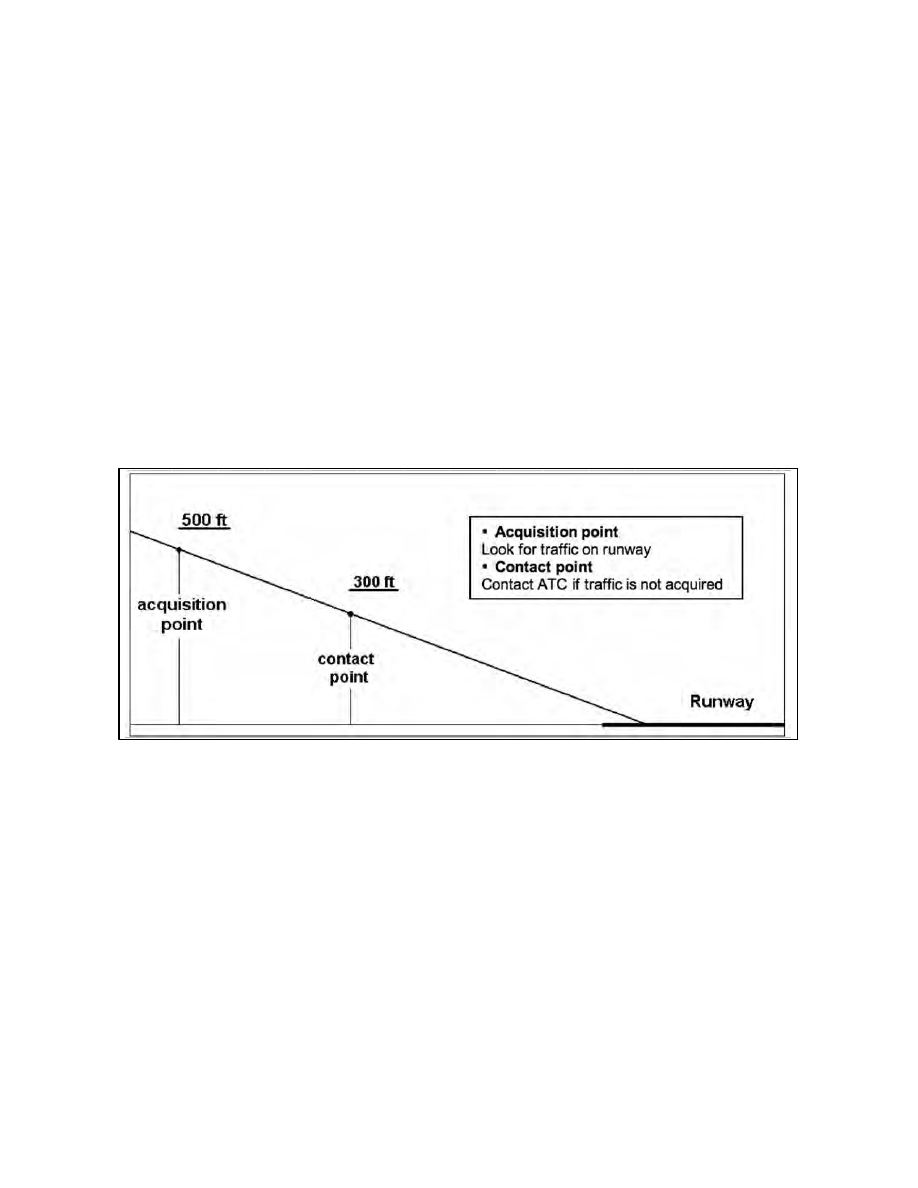
AIM
4/3/14
2−1−11
Airport Lighting Aids
b.
Operating Characteristics:
If an aircraft or ground vehicle occupies an activation
zone on the runway, the PAPI light fixtures on that
runway will flash. The glide path indication is not
affected, i.e. the configuration of red and white PAPI
lights observed by the pilot on approach does not
change. The stand-alone FAROS system flashes the
PAPI lights when traffic occupies an activation zone
whether or not there is an aircraft on approach.
c.
Pilot Observations:
A pilot on approach to the runway observes the PAPI
lights flashing if there is traffic on the runway
activation zones and notices the PAPI lights cease to
flash when the traffic moves outside the activation
zones.
A pilot on departure from the runway should
disregard any observations of flashing PAPI lights.
d.
Pilot Actions:
When a pilot observes a flashing PAPI at 500 feet
above ground level (AGL), the pilot must look for and
attempt to acquire the traffic on the runway. At 300
feet AGL, the pilot must contact ATC for resolution
if the FAROS indication is in conflict with the
clearance (see FIG 2−1−11). If the PAPI lights
continue to flash and the pilot cannot visually
determine that it is safe to land, the pilot must execute
an immediate “go around”. As with operations at
non-FAROS airports, it is always the pilot’s
responsibility to determine whether or not it is safe to
continue with the approach and to land on the runway.
FIG 2
−1−11
FAROS Glide Slope Action Points
Pilots should inform the ATCT when they have
executed a go around due to a FAROS indication that
is in conflict with ATC instructions.
NOTE
−
At this time, the stand-alone FAROS system is not widely
implemented and is used for evaluation purposes.
2
−
1
−
8. Control of Lighting Systems
a.
Operation of approach light systems and
runway lighting is controlled by the control tower
(ATCT). At some locations the FSS may control the
lights where there is no control tower in operation.
b.
Pilots may request that lights be turned on or off.
Runway edge lights, in−pavement lights and
approach lights also have intensity controls which
may be varied to meet the pilots request. Sequenced
flashing lights (SFL) may be turned on and off. Some
sequenced flashing light systems also have intensity
control.
2
−
1
−
9. Pilot Control of Airport Lighting
Radio control of lighting is available at selected
airports to provide airborne control of lights by
keying the aircraft’s microphone. Control of lighting
systems is often available at locations without
specified hours for lighting and where there is no
control tower or FSS or when the tower or FSS is
closed (locations with a part−time tower or FSS) or
specified hours. All lighting systems which are radio
controlled at an airport, whether on a single runway
or multiple runways, operate on the same radio
frequency. (See TBL 2−1−1 and TBL 2−1−2.)